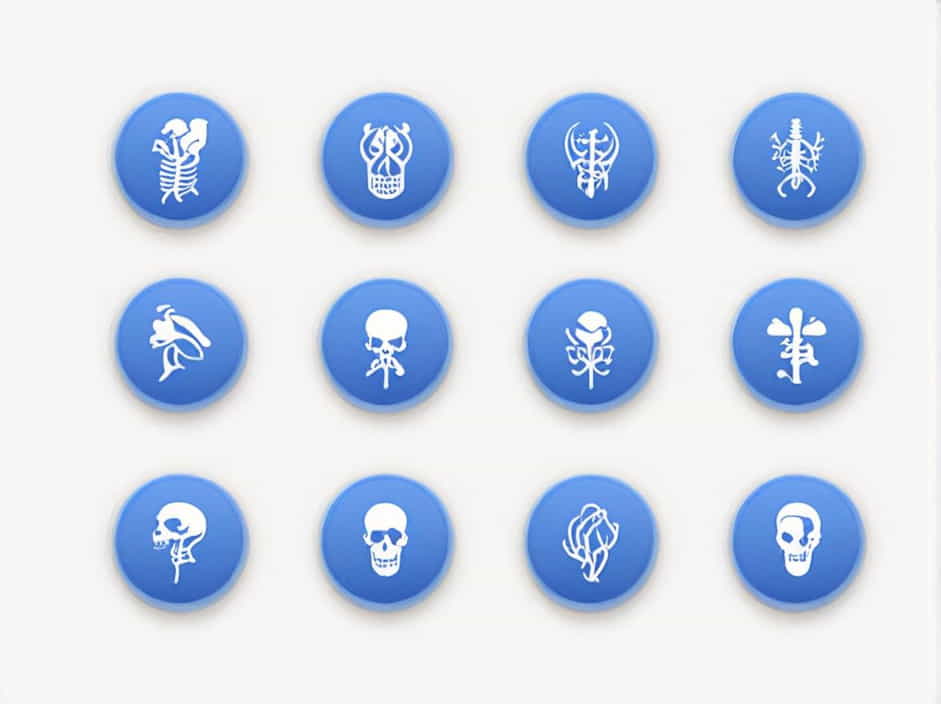The skeletal system is one of the most important systems in the human body. It provides structure, support, movement, and protection for vital organs. Studying the skeletal system is essential for students in anatomy and physiology, and Quizlet is a valuable tool for learning key terms and concepts.
This guide will explore the functions of the skeletal system, types of bones, bone structure, major bones of the body, and common skeletal disorders.
Functions of the Skeletal System
The skeletal system performs several critical functions:
1. Support
- Provides structural support for the body
- Helps maintain body shape and posture
2. Protection
- Shields vital organs from injury
- Skull protects the brain
- Ribcage protects the heart and lungs
3. Movement
- Works with muscles to enable movement
- Joints allow flexibility and motion
4. Blood Cell Production
- Red bone marrow produces red and white blood cells
- Essential for oxygen transport and immunity
5. Mineral Storage
- Stores calcium and phosphorus, which are vital for bone strength
- Releases minerals when the body needs them
6. Fat Storage
- Yellow bone marrow stores fat, which can be used for energy
The skeletal system is not just a framework but an active part of body function and health.
Types of Bones in the Human Body
Bones are classified based on their shape and function. The main types include:
1. Long Bones
- Found in the arms and legs
- Example: Femur, tibia, humerus
- Function: Support and movement
2. Short Bones
- Small and cube-shaped
- Example: Carpals (wrist bones), tarsals (ankle bones)
- Function: Stability and limited movement
3. Flat Bones
- Thin and flat for protection
- Example: Skull, ribs, sternum
- Function: Protect organs and provide surface for muscle attachment
4. Irregular Bones
- Complex shapes
- Example: Vertebrae, pelvic bones
- Function: Support and protection
5. Sesamoid Bones
- Small, round bones embedded in tendons
- Example: Patella (kneecap)
- Function: Reduce friction in joints
Understanding bone types helps in recognizing their roles in movement and protection.
Bone Structure and Composition
Bones are made of living tissue that constantly regenerates. The structure of bones includes:
1. Compact Bone
- Dense and strong
- Found in the outer layer of bones
- Provides protection and support
2. Spongy Bone
- Porous and lightweight
- Found inside bones
- Contains red bone marrow, which produces blood cells
3. Bone Marrow
- Red marrow produces blood cells
- Yellow marrow stores fat
4. Periosteum
- A thin membrane covering bones
- Contains nerves and blood vessels that nourish bones
Bones are not solid structures-they are designed to be both strong and lightweight.
Major Bones of the Human Body
There are 206 bones in the adult human body. They are divided into the axial skeleton and the appendicular skeleton.
1. Axial Skeleton (80 Bones)
Forms the central framework of the body, including:
- Skull – Protects the brain
- Vertebral column (spine) – Supports posture and movement
- Rib cage – Protects the heart and lungs
2. Appendicular Skeleton (126 Bones)
Includes the limbs and girdles that allow movement:
- Shoulder girdle (clavicle and scapula) – Connects arms to the body
- Arms and hands – Humerus, radius, ulna, carpals, metacarpals, phalanges
- Pelvic girdle – Supports lower body weight
- Legs and feet – Femur, tibia, fibula, tarsals, metatarsals, phalanges
Learning the major bones is essential for understanding human movement and biomechanics.
Joints and Their Functions
Joints are where two or more bones meet, allowing movement and flexibility. The three main types of joints are:
1. Fibrous Joints (Immovable)
- No movement
- Example: Skull sutures
2. Cartilaginous Joints (Partially Movable)
- Limited movement
- Example: Intervertebral discs in the spine
3. Synovial Joints (Freely Movable)
- Allow a wide range of motion
- Types include:
- Hinge joints (knees, elbows) – Allow bending
- Ball-and-socket joints (shoulders, hips) – Allow rotation
- Pivot joints (neck) – Allow turning
Joints connect bones and enable motion, making them essential for everyday activities.
Bone Growth and Repair
Bone Formation (Ossification)
- Begins before birth and continues into early adulthood
- Cartilage is replaced by bone cells through ossification
Bone Remodeling
- Old bone tissue is replaced with new bone
- Essential for bone strength and repair
Fracture Healing
When a bone breaks, the healing process involves:
- Inflammation – Blood clots form
- Soft Callus Formation – Cartilage bridges the gap
- Hard Callus Formation – Bone cells replace cartilage
- Remodeling – The bone regains its original shape
Proper nutrition (calcium, vitamin D) and exercise help maintain strong bones.
Common Skeletal Disorders
1. Osteoporosis
- Weak and brittle bones due to calcium loss
- Common in elderly people, especially women
- Prevention: Calcium-rich diet, weight-bearing exercise
2. Arthritis
- Inflammation of the joints, causing pain and stiffness
- Types: Osteoarthritis (wear and tear), Rheumatoid arthritis (immune disorder)
3. Scoliosis
- Abnormal curvature of the spine
- May require bracing or surgery
4. Fractures
- Breaks in bones due to injury
- Types:
- Simple (closed) fracture – Bone stays inside skin
- Compound (open) fracture – Bone pierces the skin
Preventing skeletal disorders involves maintaining bone health through diet, exercise, and medical care.
Key Terms to Remember
Studying with Quizlet flashcards can help memorize important skeletal system terms:
- Osteocyte – Bone cell
- Osteoporosis – Bone weakening condition
- Periosteum – Membrane covering bones
- Synovial joint – Freely movable joint
- Vertebrae – Spine bones
Revising key terms and definitions improves understanding of the skeletal system.
The skeletal system provides support, movement, and protection. Understanding bone types, major bones, joints, and skeletal health is essential in anatomy and physiology.
Using Quizlet to review skeletal system flashcards and quizzes helps students memorize key terms and concepts effectively.
By mastering the structure and function of the skeletal system, students can build a strong foundation for further studies in medicine, sports science, and healthcare.
